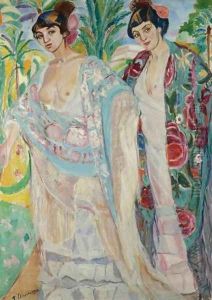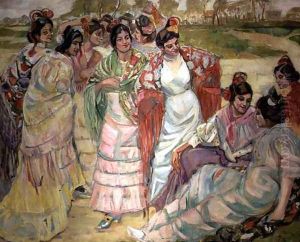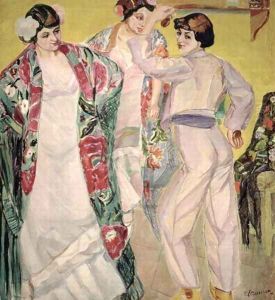Francisco (Paco) Gonzales de Iturrino Paintings
Francisco Iturrino, known as Paco Gonzales de Iturrino, was a significant Spanish painter, born on September 9, 1864, in Santander, Spain. He was a prominent figure in the development of modern painting in Spain, and his work is often associated with the Symbolist and Modernist movements of the early 20th century. Iturrino showed an interest in art from a young age, and his family, recognizing his talent, supported his artistic education.
In 1890, Iturrino moved to Paris, which was the epicenter of the art world at the time. There, he was exposed to the avant-garde styles of Impressionism and Post-Impressionism, which had a profound influence on his work. He was particularly drawn to the vibrant color palette and expressive brushwork of artists like Vincent van Gogh and Paul Gauguin. Iturrino's style evolved to incorporate these elements, and he began to develop his own unique approach to color and form.
Throughout his career, Iturrino traveled extensively, visiting countries such as Belgium, Germany, Morocco, and Tunisia. These travels further enriched his palette and subject matter, as he often depicted scenes from daily life in these diverse cultures. His works from this period are characterized by bold use of color and a sense of spontaneity, capturing the rhythms and warmth of the landscapes and people he encountered.
In addition to his travels, Iturrino maintained connections with the intellectual and artistic circles in Spain, contributing to the development of modern art in his home country. His work bridged the gap between the traditional Spanish art of the 19th century and the new, modernist approaches that were emerging in Europe.
Iturrino's art was also known for its sensuality and celebration of the human figure, with a particular emphasis on the female form. He often depicted nudes in natural settings, conveying a sense of freedom and connection to the environment. This thematic focus, combined with his vibrant color choices, positioned him as a forerunner in the exploration of color and form that would be central to later modernist artists.
Francisco Iturrino died on June 21, 1924, in Cagnes-sur-Mer, France. His legacy is that of an artist who embraced the modernist spirit of his time while maintaining a distinct connection to his Spanish heritage. Today, his works are held in numerous collections and museums, both in Spain and internationally, and he is recognized for his contributions to the modernist movement and his influence on subsequent generations of artists.


